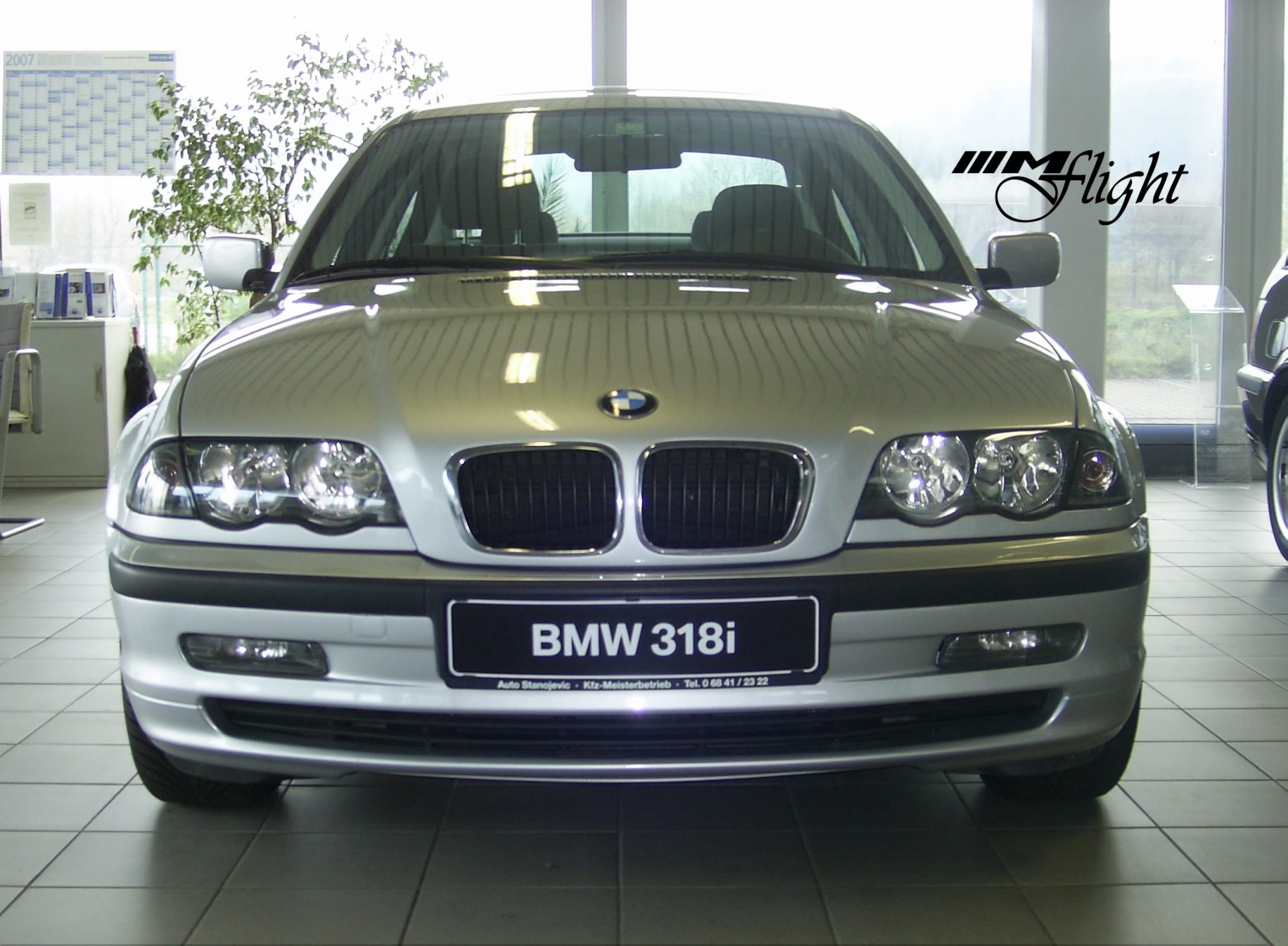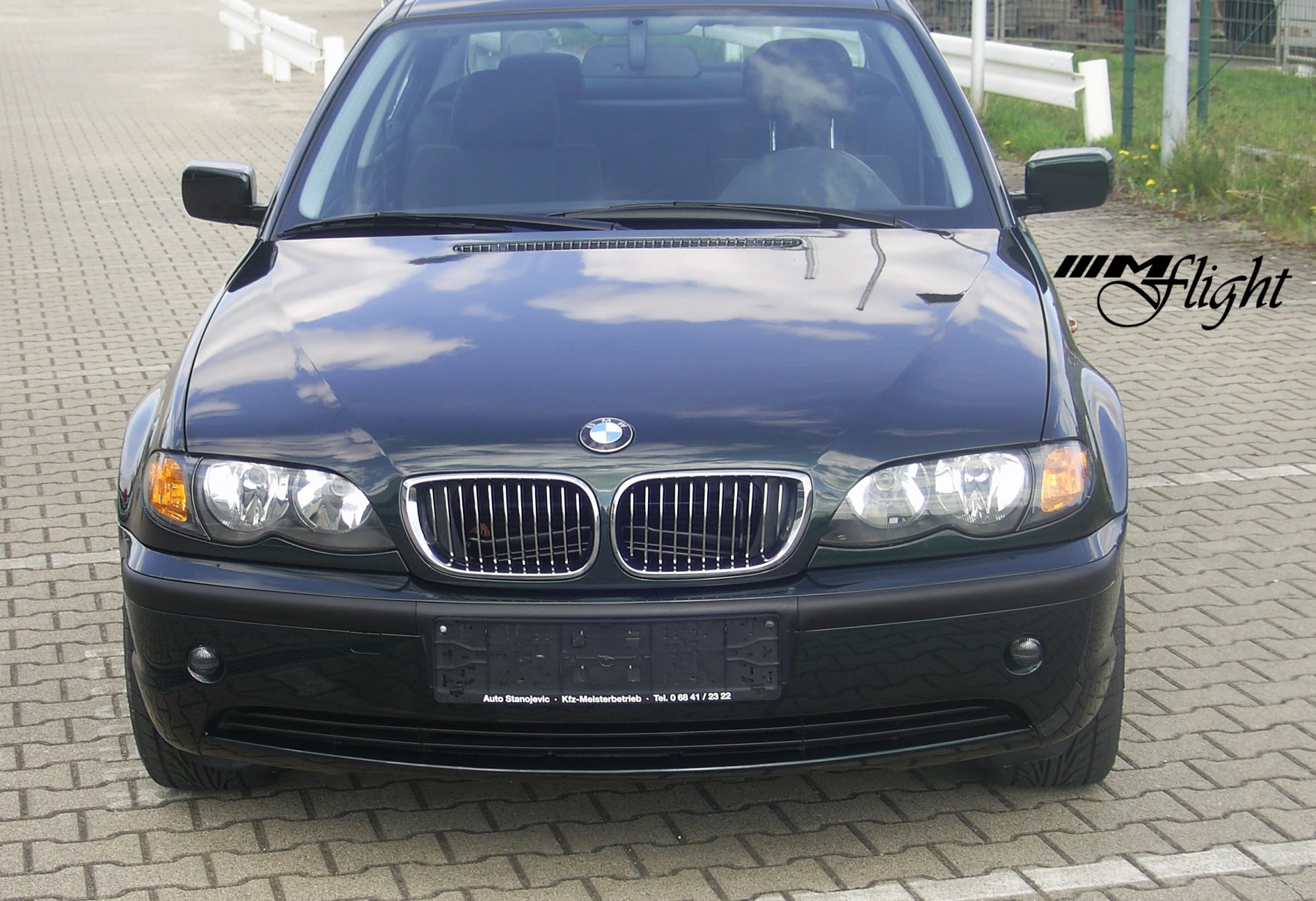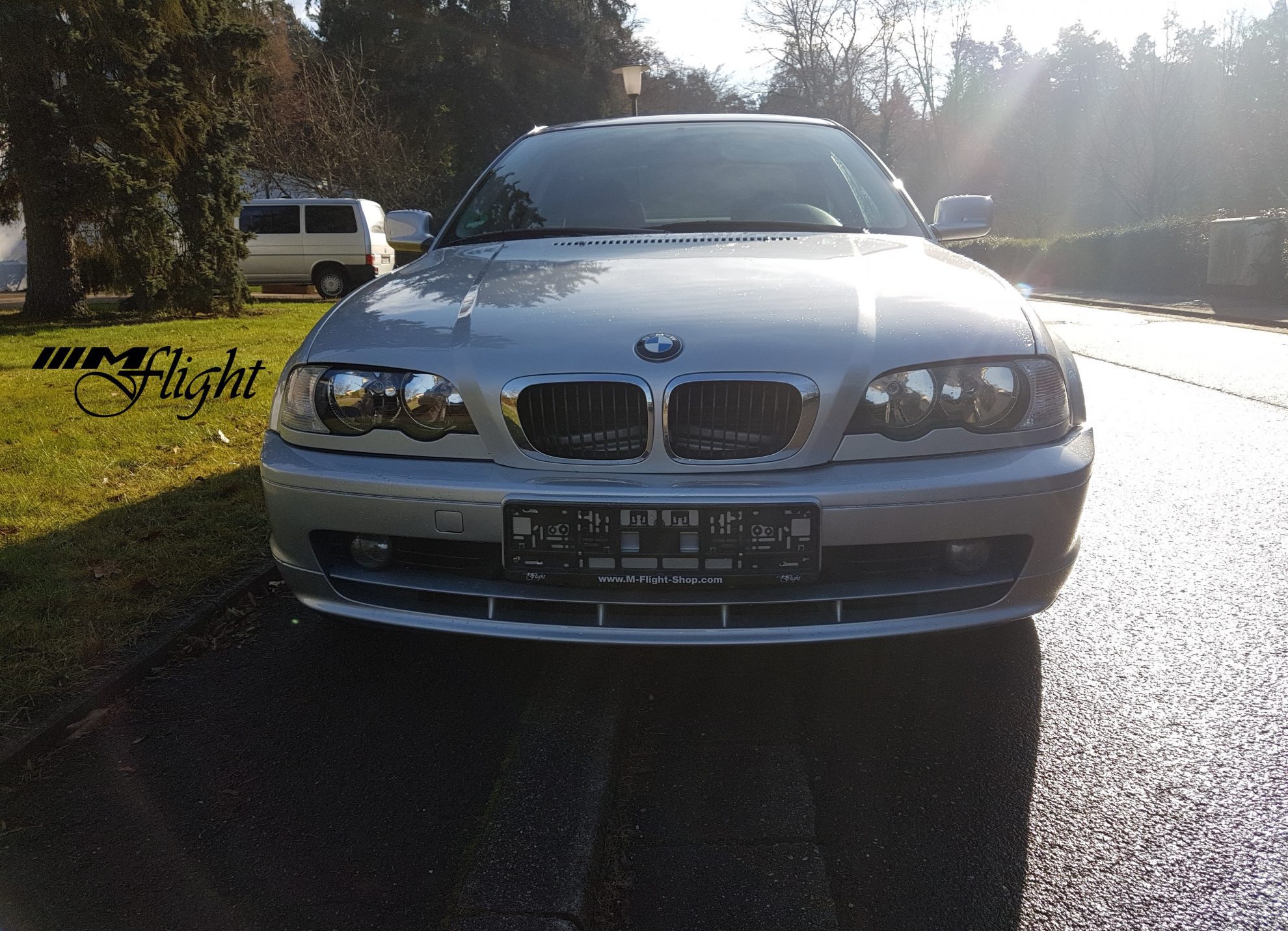Development
The development program for the E46 began in 1993 under chief engineer Wolfgang Ziebart and head of R & E. Wolfgang Reitzle. In late 1993, design work began under chief designer Chris Bangle and continued until 1995. In May 1995 the general exterior design of the E46 was approved by Erik Goplen from DesignworksUSA and as a result DesignworksUSA was commissioned by BMW to develop the exterior body for the 3 Series together with the in-house design team of the BMW Group in February 1996 Emphasis on improving aerodynamics and making the vehicle more aggressive. Design patents were filed on July 16, 1997 in Germany and in the USA on January 16, 1998.
Chris Bangle and Dr. Wolfgang Reitzle (BMW Head of Research and Development) was responsible for the exterior of the production sedan until 1995, as can be seen from the 1997 design. Production development of the sedan lasted 24 months after the design was frozen and lasted 31 months from board style approval in 1995 to the start of series production in December 1997. Erik Goplen designed the series coupe, convertible and station wagon between 1996 and 1997. The E46 sedan was presented by press release on November 11, 1997 and brought to market with customer deliveries at the end of April 1998.
The fourth generation of the BMW 3 Series, the BMW E46, appeared at the end of April 1998. As usual at BMW, initially only as a sedan, with revised six-cylinder (M52TU) and four-cylinder (M43TU) (was also used in the predecessor model E36 , but only installed in the compact version) petrol engines and a newly developed four-cylinder diesel engine (M47). With the M47, BMW sold a diesel engine with direct injection for the first time. The first generation of this diesel engine was not yet turbocharged and therefore had a lower output. The safety equipment in all models included the standard anti-lock braking system (ABS), traction control (ASC + T), later DSC, cornering brake control, electronic brake force distribution and six airbags. Electronic vehicle dynamics control was initially only available for an extra charge of DM 1,800 for the 328i, later optional for all models, and finally as standard. From model year 2001, a brake assistant was also part of the series.
Aluminum was used in the chassis: 60 kg, which corresponds to a share of 20%. The high-strength steel on the front and rear axle supports resulted in further weight savings.
The E46 was equipped with a 5-speed manual gearbox as standard from its appearance. The diesel models from 320d, 330i and 325ti with 6-speed manual transmission were only delivered from model year 2003. On request, there was a 4-stage automatic for the four-cylinder models and a 5-stage Steptronic (automatic) for the six-cylinder models. For the 325i / Ci / ti (Limousine / Touring / Coupé / Cabrio / Compact) and 330i / Ci (Limousine / Touring / Coupé / Cabrio) there was also an optional sequential manual gearbox with the short name SMG II, the one A specialty of BMW is. The SMG II is an automated gearbox that can be shifted manually using the selector lever and shift paddles, as well as automatically. The first bGeneration of the SMG, which was previously only offered in the predecessor model the E36 and only in the 3.2 liter M3. However, this could only be operated via the shift lever on the center console and did not yet have shift paddles on the steering wheel, which was only added in the 2nd generation. The manual gearshift was delivered with 5 gears until 2003, then with 6 gears.
In April 1999, the coupé and shortly afterwards the six-cylinder diesel engine M57, which was initially only available in the sedan and in the station wagon that appeared in October 1999 and is traditionally known by BMW as Touring. It was not until the “facelift” (model upgrade) of the coupé and convertible in 2003 that this diesel engine was also available for these models.
The convertible followed in April 2000. In June 2000 the first M54 engine appeared with the 330i, in autumn the other M52TU six-cylinder units were also replaced by more powerful M54 versions. Together with the M54 engines, there were also the models with all-wheel drive with the additional designation xi (gasoline engine) or xd (diesel engine).
In June 2001 the Compact was launched based on the E46 series. For the first time, engines with the new Valvetronic v (only 316ti and 318ti) were used, which also appeared in the other E46 variants in the new model year, which began a few months later. These engines were called N42 B18 (316ti and 318ti) until 2003, in the other 4 cylinder models of the 3-series BMW (Liousine, Coupe, Touring) of the E46 series, the engine variants (M43TU) were still installed until the end of 2001. Externally, the Compact differs from the other designs at the rear and front.
The new engine with the designation N42 B18 and N42 B20, as well as the revised version N46 and the only briefly built variant N43 were in principle milestones. However, there were many homemade problems with these engines. On the one hand, a timing chain that was much too undersized was installed and, on the other hand, the materials of the chain rails were poorly chosen. Since BMW installed these engines in the E46 over a period of 3 years and then in the compact successor to the 1-series BMW E81 / E82 the revised version that N46 already brought, further savings have made these chains even weaker. While the timing chains and rails on the predecessor lasted 140-160,000 km, the chains on the 1 already broke after 40,000 km or even less km of mileage. Since hardly anyone achieved this mileage with his 3 Series BMW in 3 years, this did not work out great at first and BMW assumed individual cases, since these vehicles were already out of the guarantee due to the mileage and here, if at all, the goodwill in the room was standing. But now the problem was recognized and action had to be taken, as these problems were already occurring during the warranty period.
In addition, these engines of the N42 B18 and N42 B20 had another problem. The so-called valvetronics. This regulates the idling speed and all load ranges via the immersion depth of the inlet valves, and therefore in principle no longer needs a throttle valve. In the E46, however, this still had to be installed because of the dynamic stability control (DSC), as this system still requires a throttle valve, which was solved differently in the successor model and was no longer required. Since the negative pressure in the intake tract was too low in these engines, a vacuum pump had to be installed on the intake camshaft in these engines, which generated the negative pressure required to supply the brake booster.
But back to the problem with this valvetronics. In the event of insufficient maintenance and long or excessive oil service intervals or the use of inferior or wrong oil, these waves break in and a repair is very expensive (approx. 3000 €).
But also the 6 cylinder models, the successors of the M52TU, the M54 had their problems. These suffered from increased oil consumption in old age. This is due to the fact that these models have an oil tube on each cylinder, which smears the piston and the cylinder walls from below with oil during operation and thus lubricates them. These are glued and pressed into the block. If the oil service intervals are too long or if maintenance is not carried out in accordance with the regulations, these become silted up and clogged so that the cylinders are no longer adequately supplied with oil. Due to the peculiarity of the M54, the cylinder walls of which are specially coated, this coating is then removed due to the insufficient lubrication, so that the oil vapors and oil are transported from the pistons into the combustion chamber and therefore the oil consumption occurs. We have also had a few engines on which these oil pipes had completely fallen out of the block.

The BMW E46 was one of the best-selling vehicles in its day. With it, the modern direct-injection diesel engines were also introduced at BMW, which at the time set standards in terms of performance and smoothness. Compared to its predecessor (E36), the passenger cell has been designed to be much more stable, thus increasing accident safety.

Model upgrade or facelift
In September 2001, the sedan and the Touring received a facelift. In addition, the above-mentioned new four-cylinder engine generation with the variable valve control Valvetronic appeared.
The exterior of the lifted version can be recognized primarily by the differently shaped front and rear lights, the flatter, wider and more angular BMW kidneys, the now outward beading on the bonnet, and the side indicators of the front lights, their outward contours from the Belt line was moved high on the shoulder line of the vehicle.


E46 Before Face lift (Limousine / Touring) E46 Face lift (Limousine / Touring)
Another important revision, which was not externally visible at first glance, concerned the attachment of the rear axle to the body. Here, cracks formed frequently – especially in vehicles with six-cylinder engines from the first years of production – which required very complex and expensive repairs (complete dismantling of the rear and replacement of a large body part, the spare wheel well). As a preventive measure and alternative to complete repairs when cracks were not yet very advanced, BMW offered for a while the targeted gluing of the sheet metal at risk of cracking with a special resin (not recommended!).
An ESP (Electronic Stability Program) was standard in all models from September 2001.
In March 2003 the Coupé and Cabriolet were revised, but could still be easily distinguished from the sedan.


E46 Coupe / Cabrio before Face lift E46 Coupe / Cabrio Face lift
There was no facelift for the M3 and M3 CSL models during the entire construction period. Only the rear lights were replaced with slightly modified lights with LED technology.

As part of the revision measures for the 3 Series, the following engine variants were also switched to manual 6-speed gearshifts from March 2003 instead of just 5-speed gearboxes: 320d, 330d, 330i. This applied to all body variants with such a motor, i.e. coupé, convertible, touring and sedan, as well as the 325ti Compact. The gear ratio and the performance remained the same, since 6th gear is an overdrive gear that reduces speed, consumption, wear and tear and noise.
The E46 M3, which was only available as a coupe and convertible, did not receive a face lift like the E46 coupe and convertible variant, only the LED taillights were installed in the M3 from the end of 2003.
The prices from 2004 ranged from 21,500 euros for a 3 Series Compact to 85,000 euros for the M3 CSL.
The Compact also received a refresh in March 2003. It should defuse the unusual clear glass taillights with completely red taillights. In addition, there were outwardly curved side skirts and an additional bead in the trunk lid.


E46 Compact Before Face Lift, here is clearly the shorter license plate bar E46 Compact Face Lift, here is clearly the longer license plate bar (arrows) and the new one
(arrows) and see the missing bead See beading on the flap
Nevertheless, the Compact of the E46 series could not repeat the success of its predecessor and became a flop. Its production was stopped in December 2004 after just over three years of construction. Previously, BMW had practically cleared the warehouse of this model in a large, subsidized leasing / financing offensive paired with lavish equipment. BMW learned from the mistakes in its market positioning and developed the successor to the BMW 1 Series, an independent series that is supposed to compete against the Audi A3 and VW Golf in the compact class.
The following equipment packages, which could also be customized, were available for the E46:
Edition Exclusive:
- Flashing light white
Headlining anthracite individual
Door sills with chrome insert
Exterior in body color
Window slot cover and side frame molding in chrome
Leather steering wheel
Light alloy wheels styling 136 (16 “, 330i / d star spoke 137 17”)
Lumbar support for driver and front passenger
Matt chrome rings around the round instruments
Metallic paintwork (chiaretto red, mystic blue, orient blue, sapphire black, silver gray, steel blue and titanium silver)
Multifunction for steering wheel
Fog lights
Kidney bars in chrome
Chameleon leather upholstery
rain sensor
Shift and handbrake bellows in leather
Headlight washer system
Seat heating for driver and front passenger
Xenon light
Edition Lifestyle:
- Flashing light white
Through-loading system (only 330i and 330d)
Door sills with chrome insert
Exterior in body color
Window slot cover and side frame molding in chrome
Steering wheel: sport leather steering wheel
Light alloy wheels styling 136 (16 “, 330i / d star spoke 137 17”)
Matt chrome rings around the round instruments
Fog lights
Kidney bars in chrome
Upholstery: fabric jacquard uni
rain sensor
Shift and handbrake bellows in leather
Seat heating for driver and front passenger
Uni paintwork (japan red II, black II, alpine white III)
Edition Sport:
- Interior trim aluminum cube silverKidney bars in chrome
rain sensor
Sports package M II (chassis, aerodynamics, black headlight covers, double spoke 68M (17 “), sports seats, fabric / Alcantara” Laser “, Shadow Line, M steering wheel, anthracite headliner, white indicators, door sill trims with M emblem, M footrest, exterior features in body color)
Seat heating for driver and front passenger
Uni paintwork (japan red II, black II, alpine white III)
For all three variants there are also “special” editions, mainly containing individual paintwork, individual fabrics / leather, interior trim and a few small things.
Special Edition:
Exclusive BMW Individual paintwork (stratus gray metallic or carbon black metallic) BMW Individual Walknappa leather upholstery and trim (cinnamon, two-tone dark gray / gray) Handbrake and gear lever bellows in leather color Floor mat edging in leather color BMW Individual birch anthracite interior trim Exclusive door sill trim
There was also the Edition 33, which only affected the Touring variant, as well as the special model “Clubsport” and the M3 CSL.
We will report in a separate article what makes these variants special and what makes them different.
Power package (ZHP)
330ci ZHP
The power package was an option sold in North America, commonly referred to by the order code ZHP (the order code in Canada was ZAM) in the United States, for 330i sedans from model years 2003 to 2005 and 330ci coupes and convertibles from 2004 to 2005 Available in 2006, it included various aesthetic changes from the regular 3 Series, as well as functional and mechanical improvements.
The ZHP was equipped with sportier camshafts and revised engine tuning to increase the output from 168–175 kW (225–235 hp) as well as a shorter axle transmission ratio and a corresponding increase in the redline from 6,500 rpm to 6,800 rpm Standard suspension with firmer springs and dampers, larger stabilizers, stronger ball joints on the front wishbone, a lower ride height, a heavy handlebar and slightly more negatively modified camber. Car and Driver magazine tested the car on the racetrack, which recorded an acceleration time of 97 km / h (0 to 60 mph) of 5.6 seconds and a 1/4 mile time of 14.3 seconds.
325i SULEV
BMW M56 SULEV In-line six-cylinder
In some parts of the US, BMW sold a version of the 325i that met the requirements of Super Ultra Low Emission Vehicle (SULEV) emission standards. California, New York and Massachusetts received the SULEV E46 in 2003 and Vermont in 2004. They used a variant of the M54 engine called the BMW M56. The M56 meets the SULEV standards as well as the requirements for partial emission-free vehicles (PZEV) and emission-free emissions. The M56 should have an identical output power as its M54 counterpart.
BMW E46 4 Cylinder gasoline engines:

BMW E46 6 cylinder petrol engines:

BMW E46 diesel engines:

BMW M3 and ALPINA engines:

The drivetrain / transmission BMW E46:

The successor to the sedan (E90) was introduced in March 2005. The Touring (E91) followed in September 2005. The Coupé (E92) came on the market in September 2006 and the Cabrio (E93) in March 2007.
Production periods
Sedan (E46 / 4): April 1998 to February 2005
Coupé (E46 / 2): April 1999 to June 2006
Touring (E46 / 3): October 1999 to June 2005
Convertible (E46 / 2C): March 2000 to February 2007
Compact (E46 / 5): June 2001 to December 2004
M3 Coupé (E46 / 2S): June 2000 to May 2006
M3 Cabrio (E46 / 2CS): April 2001 to June 2006